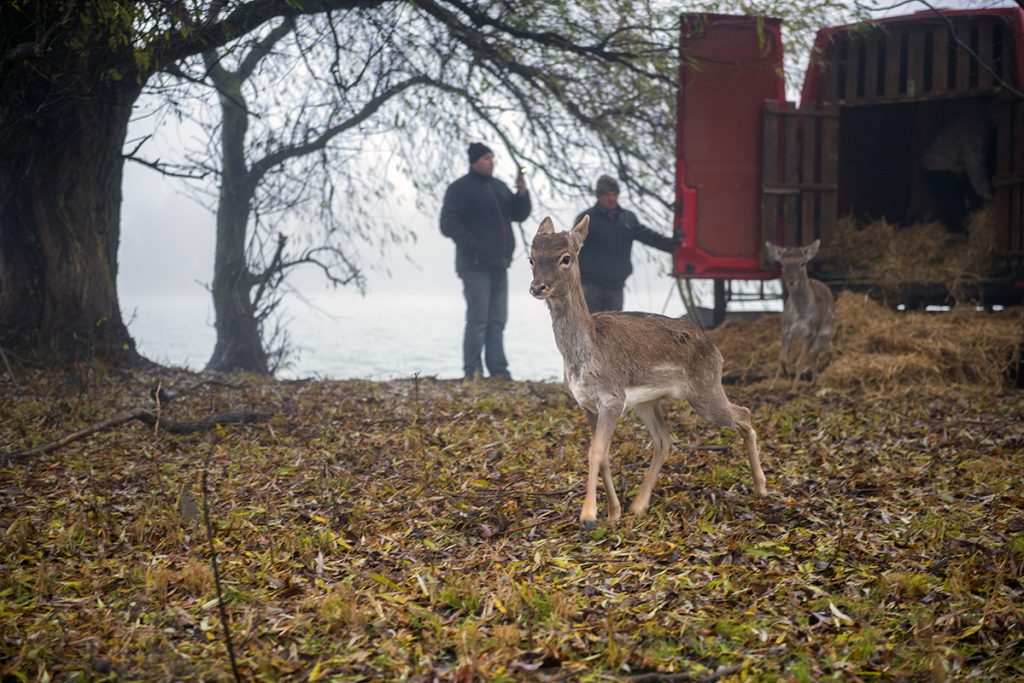Nickel mine exploitation threats to Sulawesi’s natural environment
14 November, 2024
Friday 01 july 2022
Header photo: © Andrey Nekrasov / Rewilding Europe
Mykhailo Nesterenko, team leader of Rewilding Ukraine, and communications officer Katya Kurakina fled Ukraine when their hometown Odessa was attacked. They now conduct their conservation work as much as possible from Rewilding Europe’s head office in the Netherlands.
Four months after Russian troops entered a large part of Ukraine, military activity mainly takes place in the southeast of the country. The ongoing conflict affects biodiversity and nature on a direct and indirect level, even in places where there is currently no fighting.
‘We know that some national parks were bombed and that roads and ranger offices have been destroyed, but we do not know yet what are the direct consequences for nature and wildlife,’ says Kurakina. The access to information differs per region, explains Nesterenko: ‘we have some information about what happened around Kiev, but we know very little about what is going on in the areas where the fighting continues.’
Chemical pollution caused by destroyed gas lines, chemical plants, oil depots and other industrial sites is a serious threat to the wellbeing of people and nature. This is a serious concern in Ukraine due to the many bombings. Damaged infrastructure and a lack of financial resources due to the closure of national parks have a less direct impact, but make rewilding and conservation efforts difficult.
‘If it is no longer mandatory to conduct ecological assessments before constructing houses and roads, it may seriously affect nature and wildlife.’
Katya Kurakina, communications officer Rewilding Ukraine
Another major problem is the widespread use of land mines. According to Nesterenko, approximately 25 percent of Ukraine is covered by land mines: ‘it will take years to remove all of them.’ Many of these objects are located in the coastal region, including the southwestern Danube Delta. Rewilding Ukraine’s major project is rewilding this 600,000 hectare mosaic of marshes, forests, reed beds, streams and islands.
They have been working on restoring the water flow in the Danube Delta and reintroducing species, such as the water buffalo, to restore the ecosystem. ‘We focus on key species that are fundamental to ecosystems. We call these animals architects of the landscapes,’ says Nesterenko.

‘There are many things we cannot do now, but we focus on the things we can do. In parts of the reserve we are able to remove dams, and we try to relocate deer to the Danube Delta.’ Reintroducing wildlife has become very challenging, explains Nesterenko: ‘We normally buy deer from hunting concessions. They are less willing to sell the animals these days, because of the fear of famine.’
Ukraine, a country covering 603,548 square kilometres, has many different ecosystems: from forests to steppe and from wetlands to mountain ranges. The coastal area, now primarily a military zone, is extremely important for nesting and migrating birds. Nesterenko: ‘The Black Sea Biosphere Reserve hosts the largest population the Mediterranean gull (Larus melanocesphalu) and many other sea birds. What will happen to them? Nobody knows yet, but I think the military activity in the area will impact the population of these birds.’
‘Nature is fundamental to people: you cannot separate us from nature. It directly affects us when water is polluted, or when villages are flooded because of destroyed dikes.’
Mykhailo Nesterenko, team leader of Rewilding Ukraine
Before February 2022, Rewilding Ukraine was also working in other parts of the country. ‘We contributed to the expansion of rewilding networks that connect important areas throughout the country. Even though we encountered challenges, the networks were growing gradually. These projects were on hold for months, but since the Russian military has left a large part of the country, some of our partners started operating again,’ says Nesterenko.
Both NGOs and government institutions are slowly starting to look ahead again, but many initiatives are still on hold. Meetings are taking place and conservationists are monitoring the situation where possible, tells Nesterenko, but reforestation projects have been pushed and expending protected areas is currently not an option.
‘Before the war, expanding the Emerald Network was a priority. The approach of this network is similar to the European Union’s Natura 2000 network of protected areas’, tells the conservationist. ‘We are not part of the European Union yet, but we developed a system following the same criteria. Ukraine was fairly active on reforestation and conservation compared to other countries in the region.’
Rewilding Ukraine is concerned about the possibility of simplification of construction project regulations. The need to rebuild quickly is evident, but ‘if it is no longer mandatory to conduct ecological assessments before constructing houses and roads, it may seriously affect nature and wildlife’, shares Kurakina. On top of that, says Nesterenko, ‘we must comply with EU legislation if we want to become a member.’
Despite the concerns, Nesterenko is positive about the future steps of the Ukrainian government regarding the environment. Ukraine is dealing with a very difficult humanitarian situation, but ‘nature is fundamental to people: you cannot separate us from nature. It directly affects us when water is polluted, or when villages are flooded because of destroyed dikes. Humanitarian and environmental challenges are extremely intertwined,’ he concludes.
Rewilding Ukraine is part of Rewilding Europe, a member of IUCN in the Netherlands. This nature organisation that aims to rewild diverse European landscapes. Read more about their work in Ukraine on their website.

